bottom of the john kent russell wood-lined privy reached: yields hundreds of artifacts
This entry was posted on October 29 2014 by Eric
we arrived early in the morning to begin where we left off a few days before. it was hard not to ruminate intensely about the implications of what we would soon discover in the circular-shaped oversized wood-lined privy during that time away. however, with tools in hand, we began to carefully dig after developing a documenting strategy to keep detailed records of all events pertaining to the dig. within minutes, we came across several clear and amber glass medicinal bottles with embossed markings (i.e., lettering) providing us with the manufacturer, the "remedy" and where the concoction was likely made.
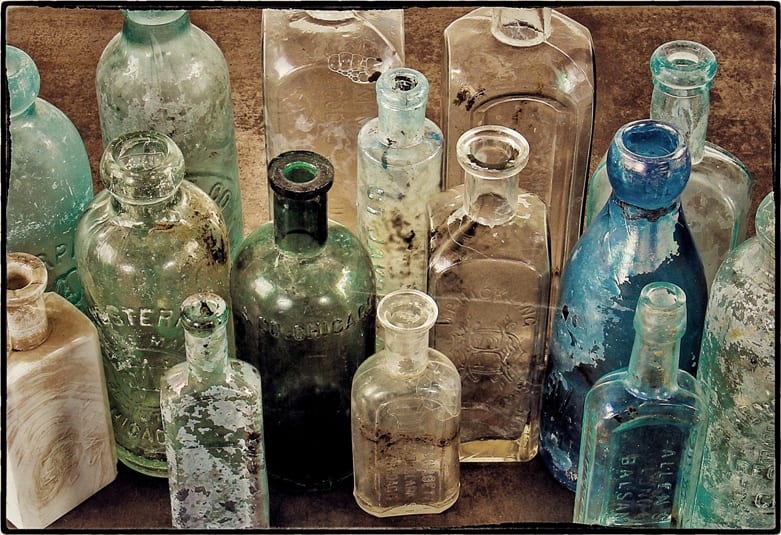
with the first few finds of the day, i had an inkling that the well-built privy could very well contain a whole slew of haphazardly "arranged" 19th century artifacts that might possibly span decades - especially when considering the enormity of the opening and materials and methods used to construct the privy. diligently photodocumenting any and all fragments and/or artifacts found - both in terms of depth and region, was incredibly important because i intend on constructing a three-dimensional digital map or a virtual re-creation of the all the unearthed artifacts in relation to one another within the privy pit once the bottom was reached.
mind you, i have no real experience in urban archaeology - my work is done above ground, so i'm just employing methodologies and a bit of common sense used when i salvage a house or building. if other privy pits are discovered, i certainly hope to create a block of time where i can thoroughly research anything and everything about privy pits, including re-reading "unearthing gotham" in the next few days. so, for the next four hours we dug and documented everything.
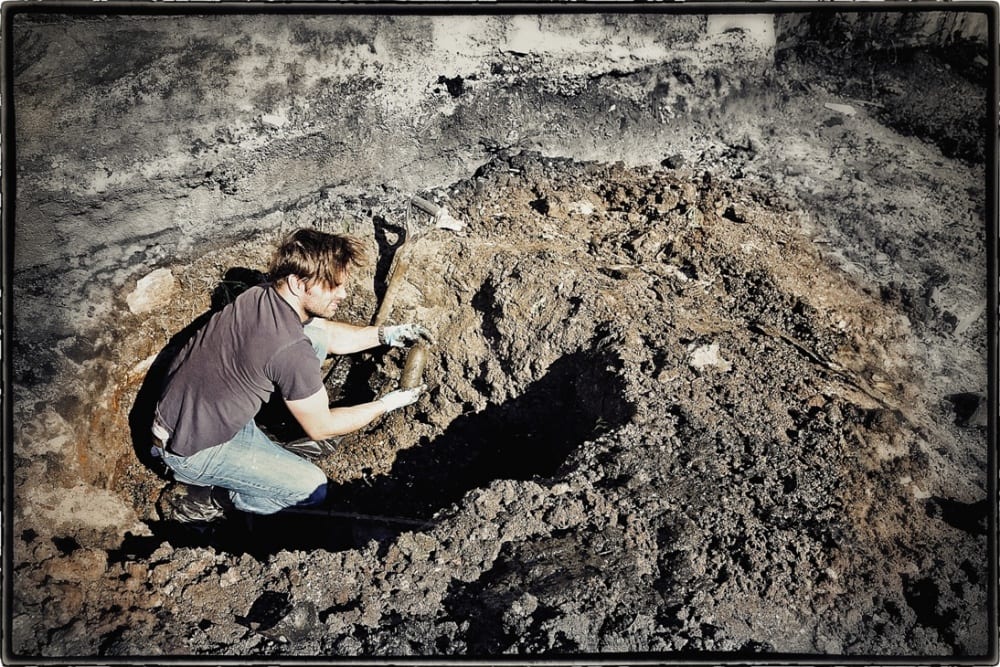
the stench was unbearable at times, especially as we dug deeper. interestingly, we discovered several piles of soggy "bricks" of old newspaper and an unbelievable amount of discolored eggshells! i was already acquainted with the vast number of animal bones and clam shells, but the eggshells were unusual, and likely contributed to the horrific smell. as the afternoon wore on, i became overwhelmed with the sheer amount of material being unearthed, with what appeared to be be no end in sight.
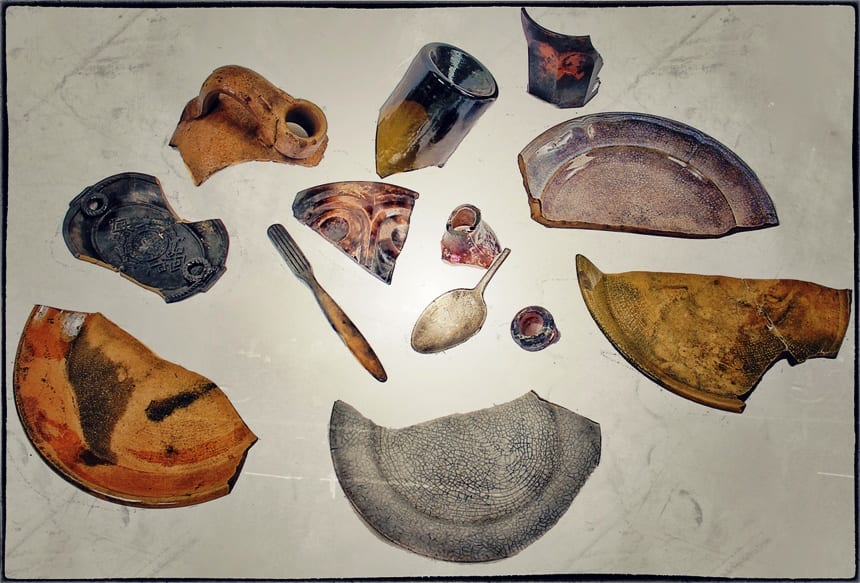
piles of medicinal, mineral water and beer bottles (and fragments), along with a staggering lot of all sorts of "stoneware" in the form of allover crazed plates, teapots, large dishes and several glasses and cups had to be processed. the very elaborate transfer print emblematic markings on the back and/or underside of all of the vitreous stoneware china (nearly all fabricated in england) were just incredible to see and appreciate.
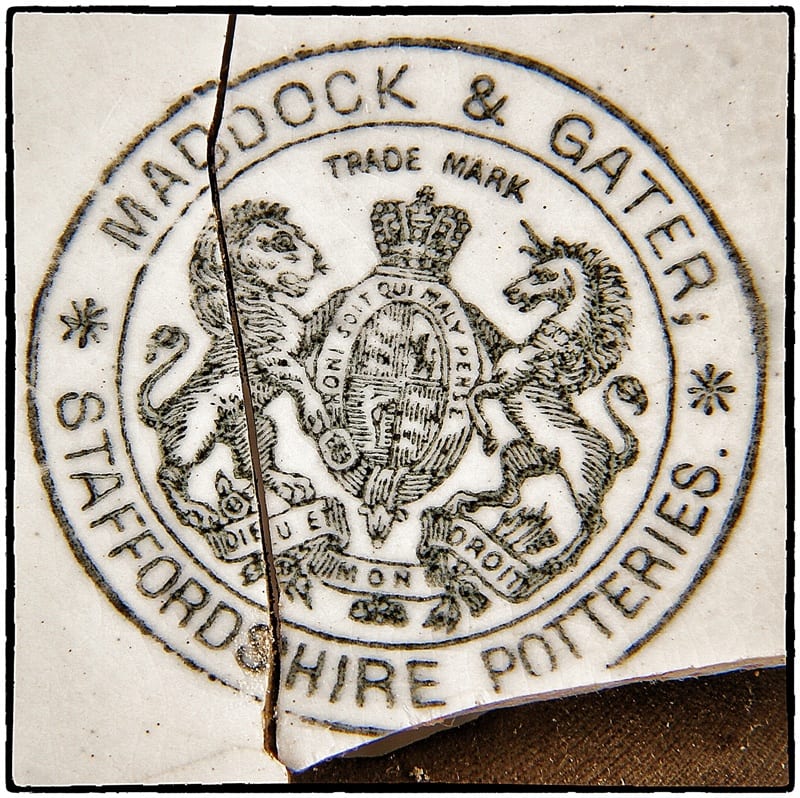
since the "blobtop" beer bottles and a few identifiable medicinal bottles were found at the very top, i figured the privy was sealed off in the 1880's, which makes sense, considering the fact that sanborn insurance maps show a stable located on the site by 1886. shortly before reaching the bottom, we were pulling artifacts that hovered around the pre and post-chicago fire time period. however, the russell house was constructed in 1855, so i was really hoping to find earlier material as we began going through the last several inches of wet sludge that infiltrated my senses with the ever-present gaseous sulfur.
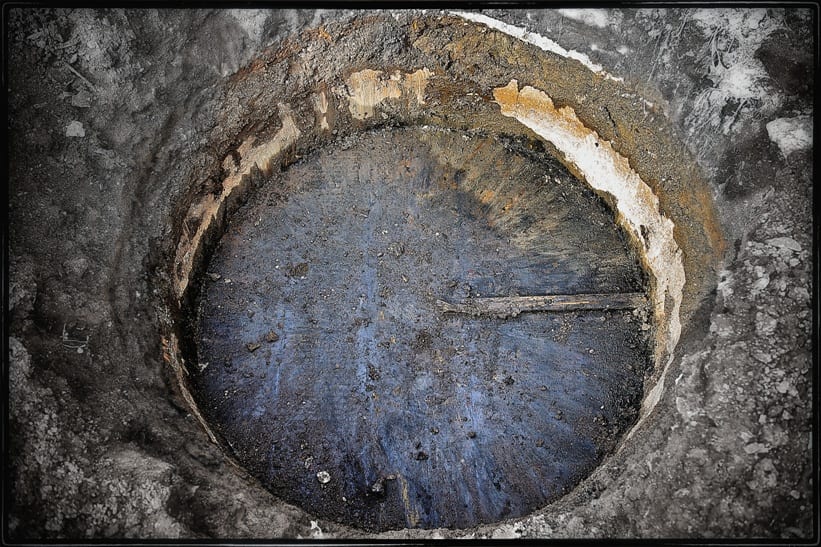
as one of my workers began gathering materials to be transported and studied further at the shop, i took a quick break and photographed, in great detail, any and all of the distinctive characteristics and existing condition of the privy's wood lining (which turned out to be a depth of five feet or so), with emphasis on the floor and wrought iron hoops used as reinforcement. i then took one last stab at a small section along the wood floor that i felt wasn't "combed" through to my satisfaction. i was absolutely thrilled to discover additional artifacts, including (perhaps most importantly) a light cobalt blue embossed "pony type" w.h. hutchinson bottle that was introduced in 1855. by closely examining the bottle's physical appearance and/or characteristics, i can, with utmost certainty, pinpoint the date of fabrication to 1855-58, when changes in the company resulted in the production of a different style of bottle.
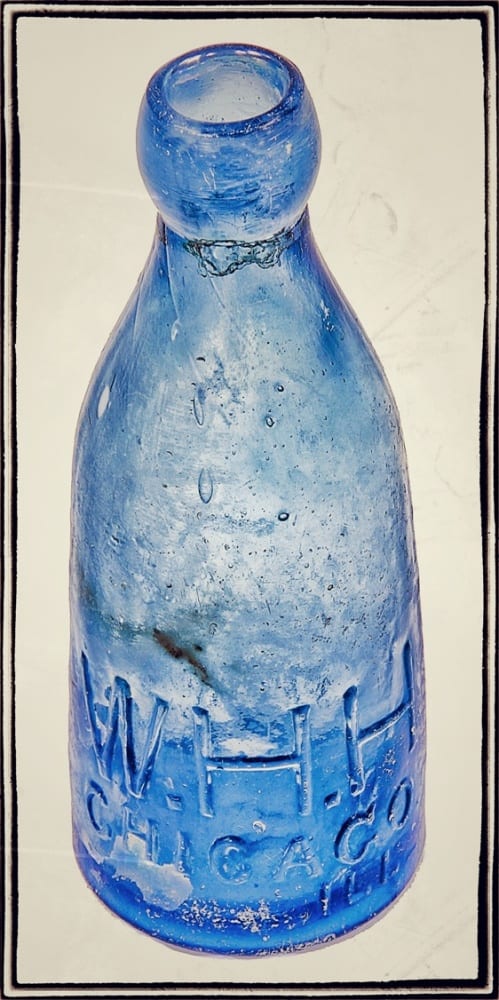
i'm so very glad that i stuck around and double-checked that small region. since that bottle and a few other artifacts found near the bottle all corroborate with that time period, i feel confident that the lifespan of this privy pit was around 35 years or from the 1850's to the 1880's. after removing the last of the muck and cleaning the privy floor for yet another round of photodocumenting, we encountered an incredibly hard, circular-shaped wood floor that was very much intact.
by pounding on it a few times, i noticed it seemed to be "floating." curious, i bore a small hole in the floor and liquid began oozing out. i then drove a small rod through the hole where an additional 12-14 inches of fluid was determined to be resting below the floor. as the murky water continued to spread (especially when i applied pressure in that region), the unbearable stench returned. yet, i'm undeterred by it all and want to return to find out whether anything else (i.e., artifacts) exists under the floor. perhaps i will do a bit of research on urban wood-lined privy pits before i cut through the floor that may or may not produce anything. if nothing is found i will simply move on with high hopes of finding additional privy pits or ash piles.
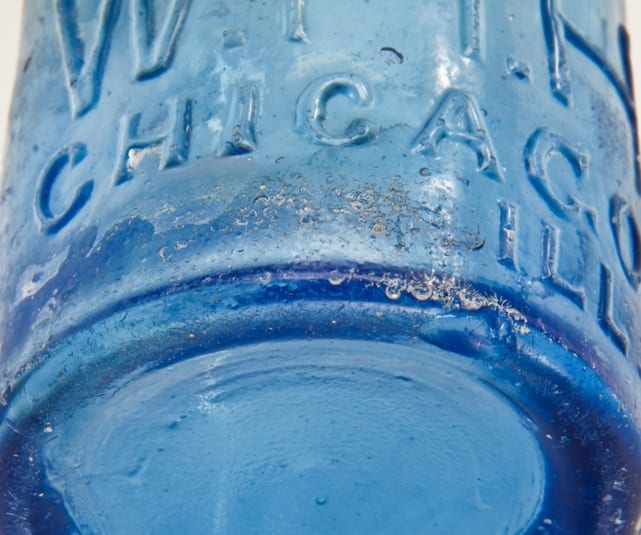
This entry was posted in , Miscellaneous, Salvages, Bldg. 51, New Products, Events & Announcements, New Acquisitions & Bldg. 51 Feed on October 29 2014 by Eric
WORDLWIDE SHIPPING
If required, please contact an Urban Remains sales associate.
NEW PRODUCTS DAILY
Check back daily as we are constantly adding new products.
PREMIUM SUPPORT
We're here to help answer any question. Contact us anytime!
SALES & PROMOTIONS
Join our newsletter to get the latest information
























